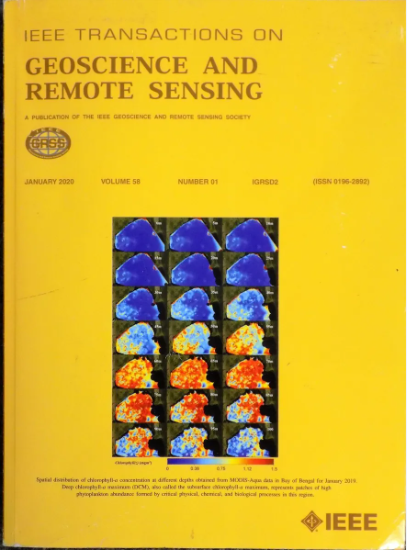通过双子空间深度先验实现高光谱图像去噪
IF 7.5
1区 地球科学
Q1 ENGINEERING, ELECTRICAL & ELECTRONIC
IEEE Transactions on Geoscience and Remote Sensing
Pub Date : 2024-09-11
DOI:10.1109/TGRS.2024.3457792
引用次数: 0
摘要
高光谱图像(HSI)去噪是下游应用必不可少的预处理步骤。充分描述高光谱图像的空间-光谱前验对于高光谱图像的去噪任务至关重要。近年来,基于低阶子空间的去噪方法备受关注。在低秩分解框架(LRDF)下,HSI 的恢复可以表述为两个子空间因子的恢复问题。由于 HSI 数据的秩已经由 LRDF 预先确定,因此基于子空间的方法已经描述了频谱低秩信息的特征。其次,基于子空间的方法只需编码恒星仪的空间前验。现有的基于子空间的方法要么依赖于人工设计的正则化,要么依赖于预先训练的深度神经网络。前者无法完全捕捉到恒星指数的内在先验,而后者可能会遇到泛化问题。受无监督深度图像先验(DIP)技术的启发,本文提出了一种双子空间深度先验(DSDP)模型来跟踪上述问题。在该模型中,两个子空间因子由两个深度神经网络并行表示。通过在经典卷积神经网络中加入流行的注意力模块,精心设计的子空间因子神经网络可以在无监督的情况下,有效地分别从每个恒星指数中捕捉到两个子空间因子的深度先验。此外,我们还添加了总变异(TV)正则器来约束子空间因子神经网络的生成,进一步确保参数学习过程的有效性和鲁棒性。大量实验证明,我们的方法优于一系列竞争方法。本文章由计算机程序翻译,如有差异,请以英文原文为准。
Hyperspectral Image Denoising via Double Subspace Deep Prior
Hyperspectral image (HSI) denoising is an essential preprocessing step for downstream applications. Fully characterizing the spatial-spectral priors of HSI is crucial for HSI denoising tasks. In recent years, denoising methods based on low-rank subspaces have garnered attention. Within the low-rank decomposition framework (LRDF), the restoration of HSIs can be formulated as a problem of restoring two subspace factors. Since the rank of the HSI data has been predetermined by LRDF, subspace-based methods have already characterized the spectral low-rankness information. Next, subspace-based methods only need to encode spatial priors for HSIs. Existing subspace-based methods either rely on a manual-designed regularization or a pre-trained deep neural network. The former fails to fully capture the intrinsic priors of the HSI, while the latter may encounter generalization issues. Inspired by the unsupervised deep image prior (DIP) technique, this article proposes a double subspace deep prior (DSDP) model to track the mentioned issues. In this model, the two subspace factors are parallelly represented by two deep neural networks. By incorporating popular attention modules into classical convolutional neural networks, the well-designed subspace factor neural network can effectively capture the deep prior of the two subspace factors separately from each HSI in an unsupervised manner. Additionally, the total variation (TV) regularizer is added to constrain the generation of the subspace factor neural network, and further to ensure the effectiveness and robustness of the parameter learning process. Extensive experiments demonstrate that our method outperforms a series of competing methods.
求助全文
通过发布文献求助,成功后即可免费获取论文全文。
去求助
来源期刊

IEEE Transactions on Geoscience and Remote Sensing
工程技术-地球化学与地球物理
CiteScore
11.50
自引率
28.00%
发文量
1912
审稿时长
4.0 months
期刊介绍:
IEEE Transactions on Geoscience and Remote Sensing (TGRS) is a monthly publication that focuses on the theory, concepts, and techniques of science and engineering as applied to sensing the land, oceans, atmosphere, and space; and the processing, interpretation, and dissemination of this information.
 求助内容:
求助内容: 应助结果提醒方式:
应助结果提醒方式:


